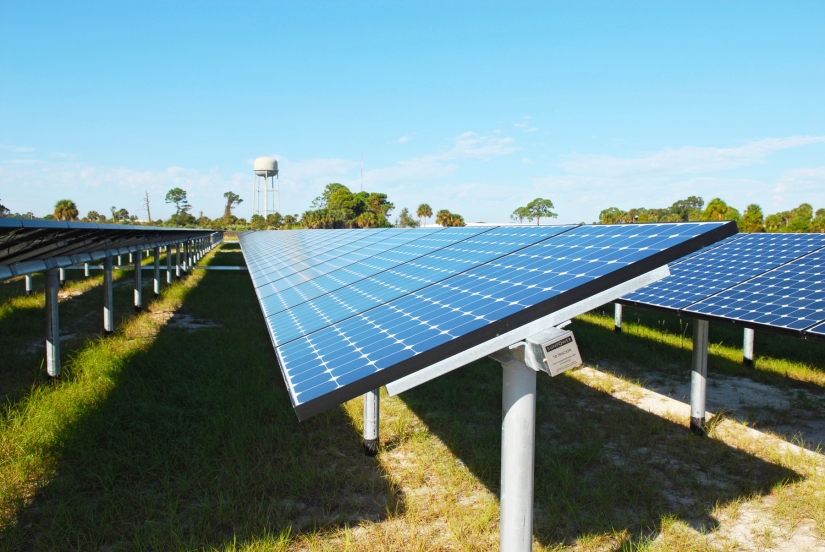
Solar energy is considered as the green technology that has marginally mitigated the emission of greenhouse gas and paved ways for a better and sustainable lifestyle. Among all the other energy sources, solar power is the most reliable and enduring renewable energy. Over time, solar panels have been adopted by a majority of households and businesses to avail the multidimensional benefits of this transformational energy, including, cost efficiency, reducing the emission of carbon dioxide, generation of sustainable electricity, etc. The energy industry has taken a radical shift toward solar energy, aimed to replace other expensive and inefficient forms of energy, such as fossil fuels.
The growth of Solar Panel Installation
Primarily, the solar panel installation is aimed to offer enhanced and seamless power generation without investing any additional expenditure. They are conventionally utilized for residential and commercial purposes to generate more enduring and cleaner electricity within the premises. There are plenty of options for a solar panel system depending upon the varying requirements of the user, that includes rooftop PVC, off-grid residential solar panels, monocrystalline solar panels, etc.
Since its early inclusion in 2000, the amount of solar panel installation worldwide has been growing at a tremendous pace and it is expected to spread exponentially in coming years with the technological advancements.
“In the year 2017, around 222 GW worth solar panel system were installed across the globe and the number is assumed to take a massive hike and reach up to 4,500 Gigawatts by 2050.”
Material Used in Making Solar Panels
Majority of solar panels are made with crystalline solar cells, which have several layers of protection that includes back sheet, encapsulant, glass, and frame. The frame is made out of aluminium and the outer covering is a low-iron glass sheet that shields the entire panel. The crystalline silicon solar cell falls between two layers, i.e., EVA encapsulant made of plastic and back sheet made from polyvinyl fluoride, protecting the panel from external moisture.

Toxic Material Found in Solar Panels
Though there is a negligible amount of toxic chemicals in a conventional silicon solar cell, the tests and researches conducted by Environmental Protection Agency (EPA) state that there are a certain amount of chemical components that can prove to be harmful. The toxicity characteristic leaching procedure (TLCP) tests reveal that solar panels possess the potential to reach a certain level of toxicity that is majorly generated via lead, chromium, and barium and is further transferred to several other components.
Life Cycle of A Solar Panel
Generally, the solar panels have an enduring lifespan of 25-30 years, barring the damage from natural calamities, accidents and inefficient maintenance practises, which means that the solar panels installed at the early days of the solar boom are on the verge of getting retired. And each passing year they can be pulled from service and contribute to the collection of tons of glass and metal photovoltaic residuals. Solar panel degradation can soon turn into a global waste management issue and scientists have asserted that it’s time to spread awareness and widely recognize this as a global issue.
“The sole solution to this mounting waste management problem is recycling but the current infrastructure and types of equipment are not sufficient to handle the flow of degraded PV modules.” – Garvin Heath, senior scientist at National Renewable Energy Laboratory
It is quite evident that the solar panel due to its layered built is complicated to recycle. It comprises of several hazardous adhesive and chemicals that might be detrimental to release in the atmosphere.
Recycling of Solar Panel Systems
“The longevity of the panels, substance used in its composition and the mode of manufacturing often make it more complicated to recycle.” – Mark Robards, director of ECS refining projects.
The conventional manner to recycle the solar panel system by leading electronic recycler companies is to dismantle the entire system and further decompose them separately. The solar panel is mechanically broken down into distinguished parts and blended with acids to extract the crystalline silicon. Furthermore, the heat is applied to melt the adhesive binding them together, and the hydrometallurgical system is used to separate the metals.
Recycling Solar Panels: Augmenting the Future Solar Industry Growth!
Solar power is the most efficient renewable energy and offers substantial environmental benefits to mankind. However, it is certainly hazardous to accumulate its residual and raise a threat to human life. Acquiring efficient and eco-friendly means to recycle the components of solar panel system and spreading enough knowledge about the hazards following its degradation can substantially mitigate the risk and cultivate a sustainable lifestyle for the human race. F
“According to the Environmental Protection Agency, the potential materials from the solar panel system can produce around 2 billion new systems by 2050.”
The end-of-life recycling of solar panel system can also assist in developing better finance for the growing solar power industry. Though the majority of substances are completely degradable, 75% of the materials extracted from the solar panel system can be reused to manufacture new solar panels.